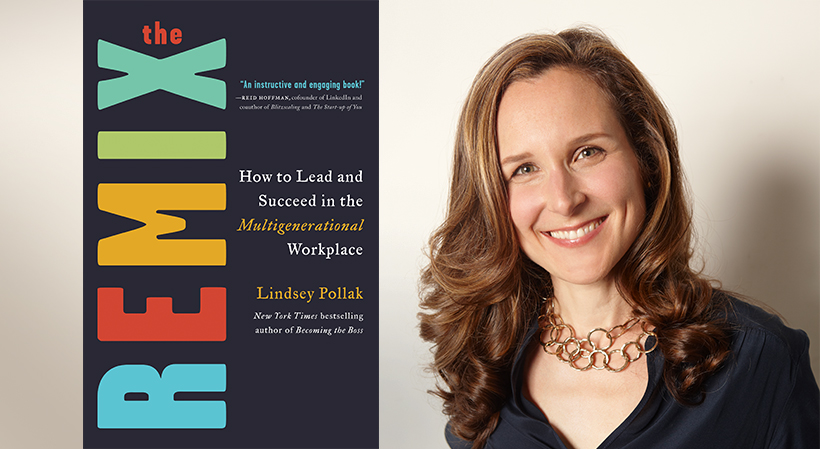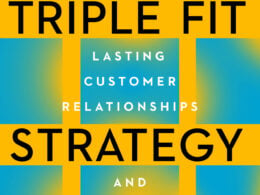The following is excerpted from “The Remix: How to Lead and Succeed in the Multigenerational Workplace” by Lindsey Pollak published by HarperBusiness.
The Entrepreneurial Remixer: Jon Steinberg
Jon Steinberg is the former president of BuzzFeed and currently founder and CEO of Cheddar Inc., a millennial- and Gen Z–focused news network. A true remixer, Jon analyzed the data that the median age of the MSNBC and Fox News viewer was 65, and CNN’s was 60, and realized it might be time for a fresh news option. Besides leading a network for millennials and Gen Zs, the majority of Jon’s employees come from this demographic, as well.
The future, he believes, will be a compromise between the past and the present: a remix. He exemplifies this in the business model for Cheddar and the way he leads his company. And he is one of the most transparent and authentic leaders I have come across.
Related: Side Hustles Through the Ages: Baby Boomers Account for Most Self-Employed Workers
“You can’t change everything. It’s too hard and takes too much time and is too jarring,” he tells me about launching Cheddar. “We decided to change the content, the casting, and the delivery of news. And we decided to keep the structure, the desks, and the concept of talking heads on-screen largely the same. We largely changed the content, distribution, and technology and kept the rest traditional.”
Jon, a Gen Xer, is sympathetic to the environment in which millennials have started their careers: growing up in the aftermath of 9/11, enduring the Great Recession, being saddled with enormous college debt.
“I do understand their situation,” he says.
But, he says, most business leaders deal with millennials in that situation by changing how they talk to them, managing millennials in a way Jon considers to be patronizing.
“My attitude,” he says, “has always been to speak to them—and everyone—very directly, tell them how opportunity in the organization works. The functions and practices of the organization are the same for everybody.”
As you can imagine, this directness is not always easy for people to hear, but it certainly represents a change from the time when leaders spent their days behind closed doors, inaccessible to the rank and file.
“When you speak to a 19-year-old intern like they are an adult, they are often shocked by it. They will come to me with a random idea and I will tell them when their idea is not very useful. ‘Vague ideas I can’t use. If you put together a document with financials, I can react to it,’ I will tell them. Honestly, they kind of love it. They’ve been so patronized by other people. Half of them come back with an amazing document.”
Jon is equally direct and transparent with informing employees about business issues related to the company overall, and hosts a weekly all-hands meeting that shares the company’s financials and coming deals.
“There are very few things that are secrets,” he says. “Most information about the company can be shared. There is actually a very small list of things that cannot be said and need to be kept in a lockbox, like an HR issue with confidentiality, for example.”
As a young media executive—most of his CEO peers are decades older—Jon is a voracious reader of business books and frequently turns to his board of directors for advice. But the “classic” advice he often reads and receives does not feel relevant to running a business in today’s environment.
For example, when he was leading BuzzFeed, Jon employed an intern named Melissa to work with him on creative sales proposals. Melissa, who had not yet graduated from college, was paid $15 an hour. After a while, she was promoted from intern to employee and continued to do the creative sales work. As the company grew, Melissa kept taking on more responsibility, eventually running BuzzFeed’s creative services unit.
This is when Jon applied the “classic” management step of hiring a “real executive” over Melissa to handle her growing team. It was a total failure.
“It was at that moment that I decided the people that are involved in building an organization will be better at it. If they want to learn management, we can teach them that. But the creativity and ideas and grit—that is much harder to build.”
Melissa is now the head of the entire business team at Cheddar.
Sign Up: Receive the StartupNation newsletter!
“Longtime media executives tell me that they hate how millennials have changed their industry with Netflix and Google and Facebook. They had this great, lucrative business of cable channels, but then a new generation came along that doesn’t want to pay for these channels. I love the idea of young people driving culture and bringing new trends and ideas. I’m genuinely curious about what they are curious about. I want them to help us get the content and culture right.”
In a multigenerational, constantly shifting workplace, and particularly in an entrepreneurial venture, a deep and genuine curiosity might be just as valuable as an MBA.
Where can you expand your curiosity to be a more successful and innovative leader?
“The Remix: How to Lead and Succeed in the Multigenerational Workplace” is available now and can be purchased via StartupNation.com.






